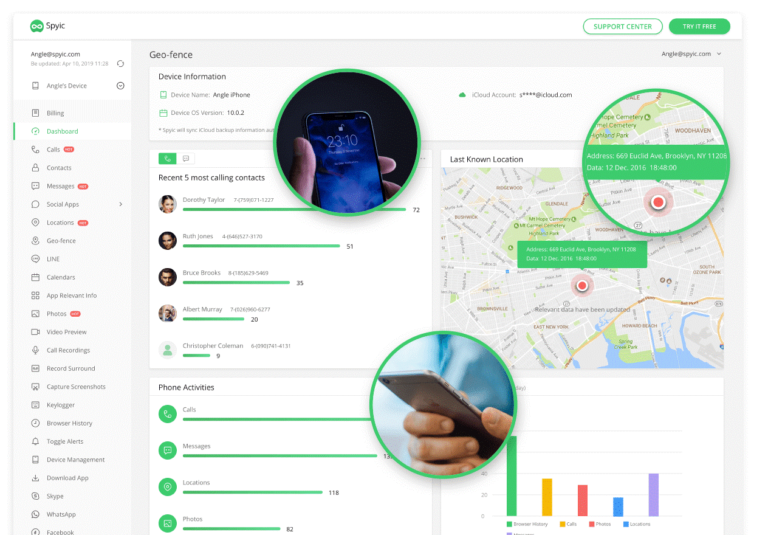Enhance Efficiency with a Portable Loading Dock System
Discover how a portable loading dock system can boost efficiency. Learn about the benefits and features of portable loading docks.
In today’s fast-paced business environment, efficiency is key to success. One area where efficiency plays a crucial role is in the logistics and supply chain operations of a business. A well-designed loading dock system can significantly impact the efficiency of a company’s operations. When it comes to flexibility and convenience, a portable loading dock system emerges as a game-changer for businesses looking to streamline their loading and unloading processes.
The Benefits of Investing in a Portable Loading Dock System
A portable loading dock system offers a wide range of benefits that can enhance the overall efficiency of a business. One of the primary advantages is its mobility, allowing businesses to set up loading docks at various locations as needed. This flexibility is particularly valuable for businesses that operate in multiple locations or need to handle temporary increases in shipping and receiving activities.
Another key benefit of mobile loading docks is its ease of installation. Traditional loading docks require significant construction work and can be time-consuming to set up. In contrast, a portable loading dock can be quickly assembled and disassembled, saving valuable time and reducing downtime. This quick setup also makes it an ideal solution for businesses with limited space or those operating in rented facilities.
Moreover, a portable loading dock system is a cost-effective solution for businesses looking to optimize their operations. By eliminating the need for permanent loading dock structures, businesses can save on construction costs and avoid long-term commitments. The versatility of a portable loading dock also allows businesses to adapt to changing operational needs without incurring substantial expenses.
How to Increase Productivity with a Portable Outdoor Loading Dock
To maximize productivity with a portable loading dock system, businesses should focus on efficient workflow management. One key strategy is to prioritize the organization of the loading area to streamline the loading and unloading processes. By establishing clear procedures and labeling systems, businesses can reduce the time spent on locating and handling goods, leading to faster turnaround times.
Furthermore, investing in equipment such as pallet jacks, forklifts, and conveyor belts can further enhance productivity when using a portable outdoor loading dock. These tools can help streamline material handling processes and reduce the physical strain on workers, leading to increased efficiency and overall output.
Regular maintenance and upkeep of the portable loading dock system are also essential to ensure smooth operations. Inspecting the equipment for any signs of wear and tear, lubricating moving parts, and addressing any issues promptly can prevent unexpected downtime and disruptions to the workflow.
Choosing the Right Portable Loading Dock System for Your Business
When selecting a portable loading dock system for your business, it’s essential to consider various factors to ensure it meets your specific needs. Firstly, assess the weight capacity and size requirements of your typical loads to choose a loading dock system that can handle your operations effectively.
Additionally, consider the height adjustability and compatibility with different types of trucks and trailers to ensure seamless loading and unloading operations. Look for features such as non-slip surfaces, safety rails, and weather-resistant materials to enhance the safety and durability of the loading dock system.
It’s also crucial to evaluate the ease of assembly and disassembly of the portable loading dock system, as well as its portability and storage capabilities. A system that can be easily transported and stored when not in use offers added convenience and flexibility for businesses with varying operational needs.
Factors to Consider for Choosing a Portable Loading Dock System Importance Weight capacity and size requirements High Height adjustability and truck/trailer compatibility High Safety features (non-slip surfaces, safety rails) Medium Weather-resistant materials Medium Ease of assembly, portability, and storage capabilities High
Reasoning: The table provides a concise overview of key factors to consider when choosing a portable loading dock system, emphasizing their importance in the selection process. By evaluating these factors, businesses can ensure that the chosen system meets their operational needs effectively.
Table:
Tips for Optimizing Workflow Using a Portable Loading Dock Description Efficient Layout Design Minimize travel distances, optimize flow Employee Training Proper equipment handling, safety protocols Regular Maintenance Inspections, lubrication, issue resolution
Tips for Optimizing Workflow Using a Portable Loading Dock
To optimize workflow using a portable loading dock, businesses can implement the following tips:
Efficient Layout Design
Design the layout of the loading area to minimize travel distances and optimize the flow of goods through the loading dock. Consider factors such as the placement of storage racks, equipment, and staging areas to create a streamlined workflow.
Employee Training
Provide comprehensive training to employees on the proper use of the portable loading dock system, equipment handling techniques, and safety protocols. Well-trained staff can contribute to smoother operations and reduce the risk of accidents or delays.
Regular Maintenance
Establish a regular maintenance schedule for the portable loading dock system and equipment to ensure optimal performance. Conduct inspections, lubricate moving parts, and address any issues promptly to prevent downtime and maintain efficiency.
Case Studies: Real-world Applications of Portable Loading Docks
Case Study 1: E-commerce Fulfillment Center
A leading e-commerce company implemented a portable loading dock system in its fulfillment center to accommodate seasonal fluctuations in shipping volumes. The flexibility of the system allowed the company to scale its operations quickly during peak periods, resulting in improved efficiency and customer satisfaction.
Case Study 2: Construction Site
A construction company utilized a mobile loading dock at its project sites to facilitate the efficient delivery of building materials and equipment. The portable nature of the loading dock system enabled the company to set up temporary loading areas as needed, reducing delays in construction timelines and enhancing productivity.
Case Study 3: Event Logistics
An event management company integrated a portable loading dock system into its logistics operations to streamline the setup and breakdown of event equipment and supplies. The versatility of the system allowed the company to adapt to different venue requirements and optimize the loading and unloading processes, leading to smoother event operations.
In conclusion, a portable loading dock system offers businesses a versatile and cost-effective solution to enhance efficiency and productivity in their logistics operations. By investing in the right system, optimizing workflow, and utilizing best practices, businesses can streamline their loading and unloading processes, reduce downtime, and improve overall operational efficiency. Whether in e-commerce, construction, or event management, the benefits of a portable loading dock system are evident in real-world applications across various industries.



